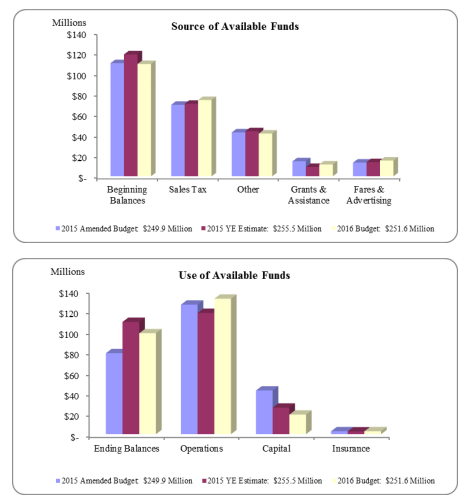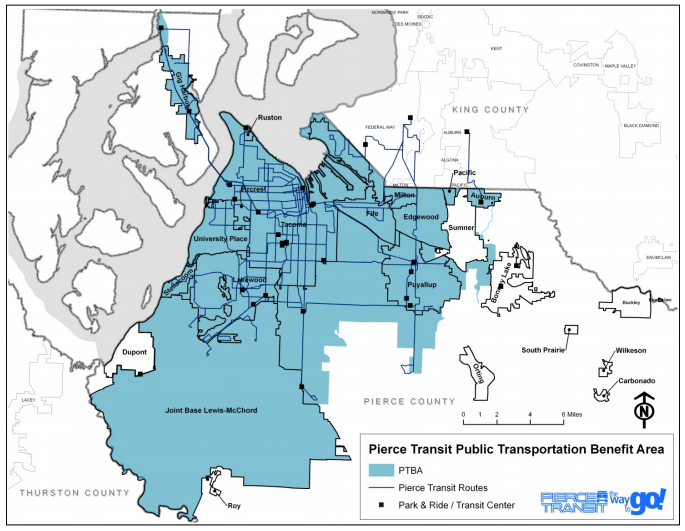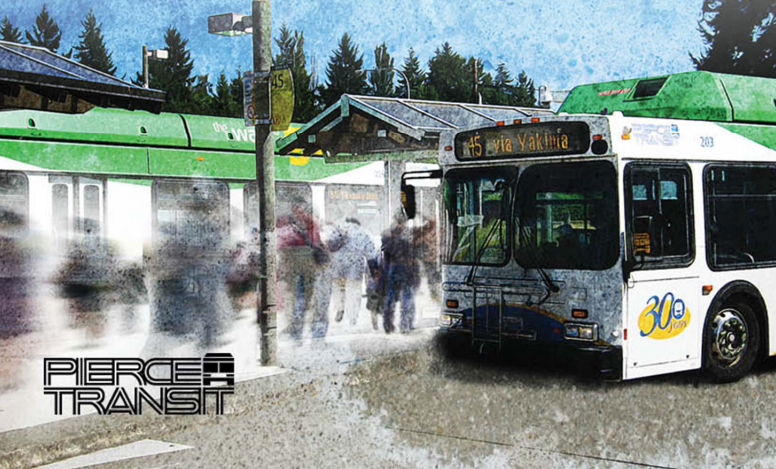Pierce Transit is on the upswing. Cash reserves are riding high with more than $110 million in the bank thanks to frugal spending habits and buoying sales tax receipts. The agency’s board of commissioners met on Monday to vote on a major expenditure plan to increase service, purchase new equipment and replace aging assets, and hire new staff. Getting to this point though, wasn’t easy and is largely the result of a tumultuous eight years.
Before the Great Recession hit, Pierce Transit had over 660,000 annual service hours on the books. Facing collapsing revenues and an unwilling electorate to save the agency from catastrophic cuts and deferred investments, the agency was forced to make tough choices. Painfully deep cuts — to the tune of 38% — decimated weekend service, curtailed the span of service for weeknights, obliterated frequency, and ravaged countywide coverage on local and express routes. When the dust settled, the agency was left with a severely damaged image and a meager 413,000 annual service hours. But all that has changed.

At the center of the current proposal is a massive 13% bus service increase over the course of the next year and a half. Pierce Transit anticipates a roll out of three rounds of service improvements that would total 59,000 annual service hours. This latest proposal comes on the heels of a year of new service deployment (16,000 service hours in total) that wrapped up in March. Adding the the new service hours to the agency’s current scorecard would bring the new tally to 502,000 annual service hours by the end of 2017 — that’s still a far cry from the peak, but it at least gets Pierce Transit more than one-quarter of the way to a new high score (158,000 service hours short). To pay for the new service, the agency plans to largely draw down on the built up cash reserves that are nearly twice the amount needed.
The first bucket of new service hours could begin in September when 15,000 service hours are planned for deployment. Another bucket of 34,000 service hours would begin in March 2017. And the final bucket of 10,000 service hours would be implemented in September 2017. A formal decision on how the service hours will be allocated to routes has yet to be determined, but, undoubtedly, the agency will seek feedback later this year on the proposals.
To facilitate service expansion, Pierce Transit will go on a hiring frenzy with 35 new positions ranging from custodians to mechanics. Importantly, 18 of the new positions will go to transit operators who will move riders on new and enhanced routes. $4.5 million has been earmarked for seven new buses to be added to the fleet, without which it would be difficult to carryout the expansion plan. Additional proposals include a system refresh and system renewal that will go toward:
- Improving branding at transit facilities and stops;
- Repainting bus shelters and replacing damaged glass;
- Making repairs to properties and improving landscaping, security, and lighting; and
- Implementing changes to manage and maintain properties easier.
Pierce Transit plans to spend a substantial amount of capital ($21 million) on this later portion of the proposal.

In the last series of service increases (June 2015 to March 2016), Pierce Transit invested service hours in three primary buckets: evening span of service, weekend service, and select weekday frequency boosts of high ridership routes. It seems likely that Pierce Transit will continue this pattern of service investments to build upon the success and utility of existing routes. With plenty of extra service hours becoming available, there may even be a desire to spread some of those hours to up the frequency of second tier performers, add trips to express routes, and make targeted route consolidations (like Route 4, which is a consolidation of Route 204 and Route 410) to eek out further efficiencies.
Regardless of the minutia of service planning ahead, the overall proposal will put the agency on a stronger footing going forward and begin to mend the public image of an innovative, nimble, and ambitious transit provider.
A copy of Monday’s study session presentation to the Pierce Transit Board of Commissions is below:
Stephen is a professional urban planner in Puget Sound with a passion for sustainable, livable, and diverse cities. He is especially interested in how policies, regulations, and programs can promote positive outcomes for communities. With stints in great cities like Bellingham and Cork, Stephen currently lives in Seattle. He primarily covers land use and transportation issues and has been with The Urbanist since 2014.


